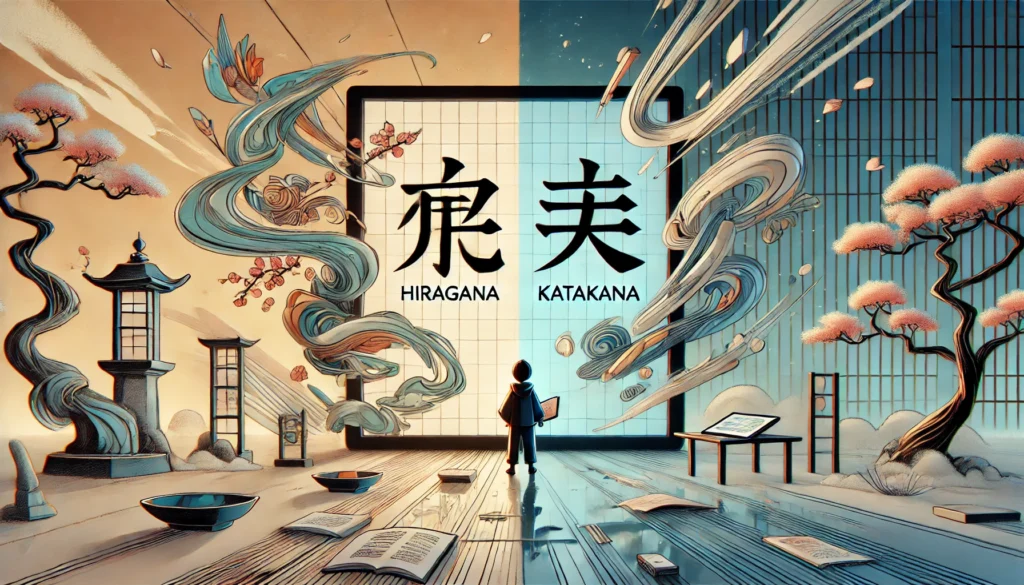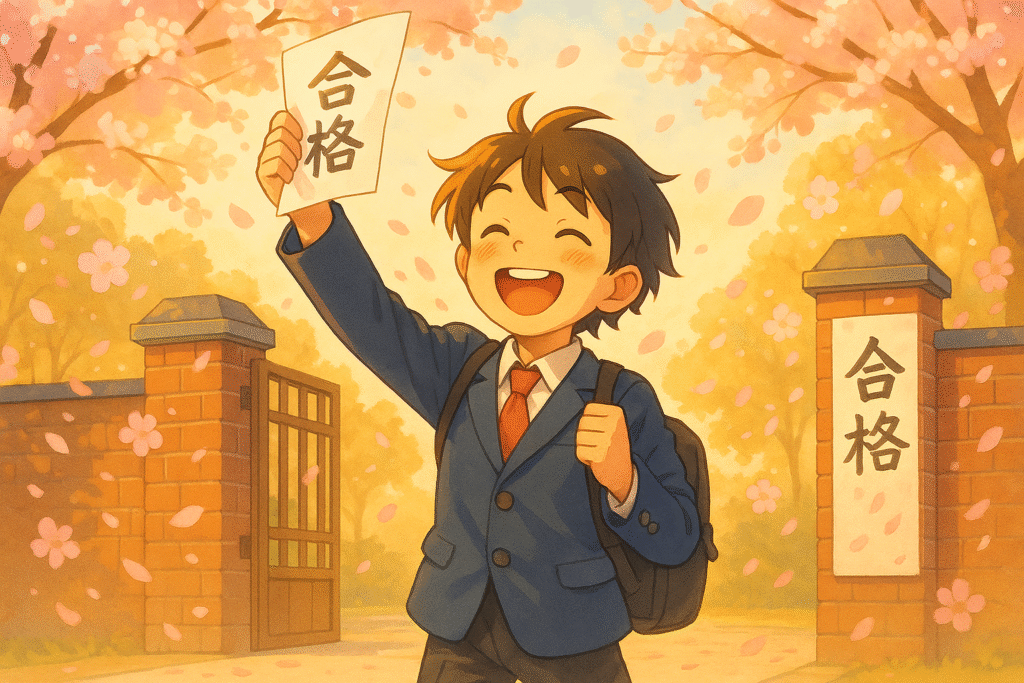Introduction: Understanding the Two Japanese Syllabaries
If you’re learning Japanese, you’ve likely encountered hiragana and katakana—two essential writing systems that form the foundation of the language. But what exactly sets them apart? Hiragana vs katakana: what’s the difference? This is a common question for beginners, and knowing how to use each correctly can greatly improve your reading and writing skills.
In this guide, we’ll break down the key distinctions, usage, and history of hiragana and katakana, giving you a clear understanding of when and why each is used.
The Three Writing Systems in Japanese
Before we dive into the specifics of hiragana vs katakana, let’s quickly touch on the three main writing systems in Japanese:
1️⃣ Hiragana (ひらがな) – The basic phonetic script used for native Japanese words and grammatical elements.
2️⃣ Katakana (カタカナ) – The script used mainly for foreign words, loanwords, and emphasis.
3️⃣ Kanji (漢字) – Chinese characters adapted into Japanese, representing whole words or ideas.
Each system has a distinct purpose, but hiragana and katakana are particularly important for beginners to master.
Struggling with Hiragana? Try Memorizle’s free Hiragana app! Need help with Katakana? Check out their Katakana app! 🚀🎌
Hiragana: The Core of Japanese Writing
What is Hiragana?
Hiragana (ひらがな) is a syllabary that consists of 46 characters, each representing a distinct sound. It is the most fundamental writing system in Japanese and is typically the first script that learners study.
What is Hiragana Used For?
✅ Native Japanese words – Words without kanji or those where the kanji is difficult or uncommon.
✅ Grammatical elements – Verb endings, particles, and conjugations.
✅ Furigana – Small hiragana placed above kanji to indicate pronunciation.
✅ Children’s books & beginner material – Since it’s easier to learn, it’s commonly used in educational materials.
Hiragana Chart
| A | I | U | E | O |
|---|---|---|---|---|
| あ (a) | い (i) | う (u) | え (e) | お (o) |
| か (ka) | き (ki) | く (ku) | け (ke) | こ (ko) |
| さ (sa) | し (shi) | す (su) | せ (se) | そ (so) |
| た (ta) | ち (chi) | つ (tsu) | て (te) | と (to) |
| な (na) | に (ni) | ぬ (nu) | ね (ne) | の (no) |
| は (ha) | ひ (hi) | ふ (fu) | へ (he) | ほ (ho) |
| ま (ma) | み (mi) | む (mu) | め (me) | も (mo) |
| や (ya) | — | ゆ (yu) | — | よ (yo) |
| ら (ra) | り (ri) | る (ru) | れ (re) | ろ (ro) |
| わ (wa) | — | — | — | を (wo) |
| ん (n) | — | — | — | — |
💡 Example sentence in Hiragana:
わたし は にほんご を べんきょう しています。
(Watashi wa nihongo o benkyou shiteimasu.)
Translation: “I am studying Japanese.”
Katakana: The Script for Foreign Words
What is Katakana?
Katakana (カタカナ) is also a syllabary with the same 46 sounds as hiragana, but the characters are more angular and straight-lined. It is mainly used for foreign words and names, making it crucial for reading menus, brand names, and imported terms.
What is Katakana Used For?
✅ Loanwords (Gairaigo 外来語) – Foreign words adapted into Japanese.
✅ Foreign names & places – Names of countries, cities, and foreign people.
✅ Onomatopoeia – Sound effects in manga and literature.
✅ Scientific/technical terms – Words related to technology and medicine.
✅ Brand names & emphasis – Used for stylistic purposes, similar to italics in English.
Katakana Chart
| A | I | U | E | O |
|---|---|---|---|---|
| ア (a) | イ (i) | ウ (u) | エ (e) | オ (o) |
| カ (ka) | キ (ki) | ク (ku) | ケ (ke) | コ (ko) |
| サ (sa) | シ (shi) | ス (su) | セ (se) | ソ (so) |
| タ (ta) | チ (chi) | ツ (tsu) | テ (te) | ト (to) |
| ナ (na) | ニ (ni) | ヌ (nu) | ネ (ne) | ノ (no) |
| ハ (ha) | ヒ (hi) | フ (fu) | ヘ (he) | ホ (ho) |
| マ (ma) | ミ (mi) | ム (mu) | メ (me) | モ (mo) |
| ヤ (ya) | — | ユ (yu) | — | ヨ (yo) |
| ラ (ra) | リ (ri) | ル (ru) | レ (re) | ロ (ro) |
| ワ (wa) | — | — | — | ヲ (wo) |
| ン (n) | — | — | — | — |
💡 Example sentence in Katakana:
コーヒー を のみます。
(Koohii o nomimasu.)
Translation: “I drink coffee.”
Hiragana vs Katakana: What’s the Difference?
1️⃣ Shape and Appearance
- Hiragana has curved, rounded characters, making it look softer.
- Katakana has sharp, angular strokes, giving it a more rigid appearance.
2️⃣ Usage & Function
- Hiragana is used for native words and grammar (e.g., こんにちは konnichiwa – “Hello”).
- Katakana is used for foreign words, names, and emphasis (e.g., アメリカ Amerika – “America”).
3️⃣ Learning Order
- Hiragana is taught first because it is the foundation of Japanese.
- Katakana is learned after hiragana since it is used less frequently.
4️⃣ Reading & Recognition
- Since hiragana is used more often, native speakers recognize it faster.
- Katakana can be harder to recognize, especially when used for new loanwords.
How to Learn Hiragana and Katakana Quickly
1️⃣ Use Mnemonics & Visual Associations
Connecting characters to images can help you memorize them faster. Example:
- し (shi) looks like a “she” with long hair.
- ツ (tsu) looks like two little dots (like tsunami waves).
2️⃣ Practice with Flashcards & Apps
Apps like Anki, Duolingo, LingoDeer, and WaniKani can help reinforce your recognition skills.
3️⃣ Write Daily for Muscle Memory
Repetition is key! Write 5-10 hiragana and katakana characters daily to develop memory.
4️⃣ Read & Recognize in Context
Practice reading Japanese menus, signs, and manga to familiarize yourself with real-life usage.
Final Thoughts: Which One Should You Learn First?
If you’re wondering where to start, the answer is clear:
✅ Learn Hiragana First – It’s essential for grammar and everyday writing.
✅ Learn Katakana Second – It’s important for reading foreign words and signs.
By mastering both hiragana and katakana, you’ll build a strong foundation for reading, writing, and speaking Japanese!
Related Articles You Might Enjoy 📖
If you found this guide helpful, check out these related articles:
🔹 Best Apps to Practice Japanese Vocabulary Daily – The top apps to boost your word retention!
🔹 How to Prepare for the JLPT N5 Exam Step by Step – A structured guide to passing your first Japanese proficiency test.
🔹 The Most Common Japanese Verbs You MUST Know – Master essential verbs for daily conversation.
By integrating these resources into your study routine, you’ll become fluent in Japanese faster than ever! 🚀
Struggling with Hiragana? Try Memorizle’s free Hiragana app! Need help with Katakana? Check out their Katakana app! 🚀🎌




